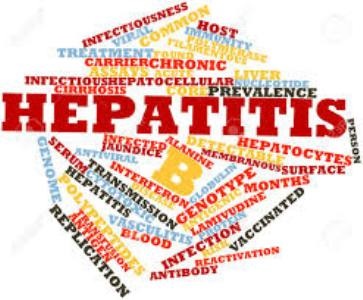
Hepatitis B is caused by the hepatitis B virus (HBV) which is a blood-borne virus.
As a highly infectious disease, HBV can transmit in the following circumstances:
- Close contact with an infected person’s blood or semen. Someone can be infected if even minute quantities of blood, semen or bodily fluids containing blood from the infected person, come in contact with tiny grazes or cuts in the skin or the mucous membranes of the mouth, eyes, genitals or anal area. It is postulated that this type of transmission may also occur through rough play among children.
- Sharing of household items – HBV can survive for some time on objects like toys, toothbrushes or razors. They may therefore transmit HBV if in close contact with an individual’s mucous membranes or non-intact skin.
- Contaminated needles or sharp objects – this includes sharing needles or syringes (e.g. intravenous drug users), tattooing, tribal scarification, acupuncture and ear piercing if the instruments are contaminated with HBV and not properly sterilised before use.
- Sex – sexual contact with an infected person can spread HBV.
- Mother to infant – HBV can be passed from a mother to her baby during or shortly after delivery. Prophylaxis after birth can prevent this type of transmission. (see "Prevention”)
- Breastfeeding is considered safe.
- Between patients and staff in health care settings – HBV can spread from one patient to another if there is a breach in infection control through contaminated medical, surgical or dental instruments. Patients undergoing haemodialysis are at an increased risk.
- HBV can also spread from a patient to a health care worker e.g. an accidental needle stick. HBV vaccination of health care workers and high risk patients can prevent this type of transmission (see "Prevention”).
- Blood transfusion and organ transplantation – this type of transmission is rare in settings where blood and organ donors are carefully screened for markers of HBV infection.
- The South African National Blood Transfusion Service (SANBS) has added virus gene specific testing for HIV, HBV and hepatitis C virus to their blood testing protocol since October 2005. This testing has significantly reduced the risk for transmission of these viruses.
- Since introduction of the new technology, there have been no documented reports of HIV or hepatitis C virus transmission by transfusion and only two confirmed cases of HBV transmissions in South Africa. This gives an observed HBV transmission rate of 0.34 per million.
How the disease progresses
When the HBV reaches the liver, it infects the liver cells and multiplies inside them. The body's immune system can recognise virus-infected cells and will attempt to destroy these cells. This immune attack by white blood cells causes liver cell damage and inflammation.
Certain enzymes that are usually active inside the liver cells are released from damaged cells into the blood and can be detected by blood tests, thus confirming the presence of hepatitis.
As the liver is also the site of production of certain blood proteins such as albumin and clotting factors, levels of these proteins may be low in severe or long-standing hepatitis.
Liver inflammation will also involve swelling of the liver. Swelling causes blockage of the bile ducts in the liver so that the bile that should flow into the gall bladder is trapped in the liver. Since it cannot escape, the yellow-green bile starts to be absorbed into the blood stream from the liver, and will circulate to the skin and eyes, causing the yellow discoloration known as "jaundice". Swelling of the liver is also what causes pain in the abdomen during hepatitis.
A health care professional will often be able to detect that the liver is enlarged and tender during examination of the abdomen.
Excessive alcohol use and co-infection with hepatitis C virus or HIV infection increases the chance of complications due to HBV infection.
Read more:
Revised and reviewed by Dr Karin Richter, MMed Path (Medical Virology), FC Path(SA) Viro, Dip HIV Man (SA), Dip Obst (SA), MBChB , Clinical Virologist, Senior Lecturer, Department of Medical Virology, University of Pretoria, Faculty of Health Sciences, and Consultant Pathologist, Tshwane Academic Division, National Health Laboratory Services (NHLS) February 2015.
Previously reviewed by Dr Eftyhia Vardas BSc (Hons), MBBCh, DTM&H, DPH, FC Path (Virol), MMed (Virol), Clinical Virologist, Director HIV AIDS Vaccine Division, Perinatal HIV Research Unit, Chris Hani Baragwanath Hospital, University of the Witwatersrand.




 Publications
Publications
 Partners
Partners















